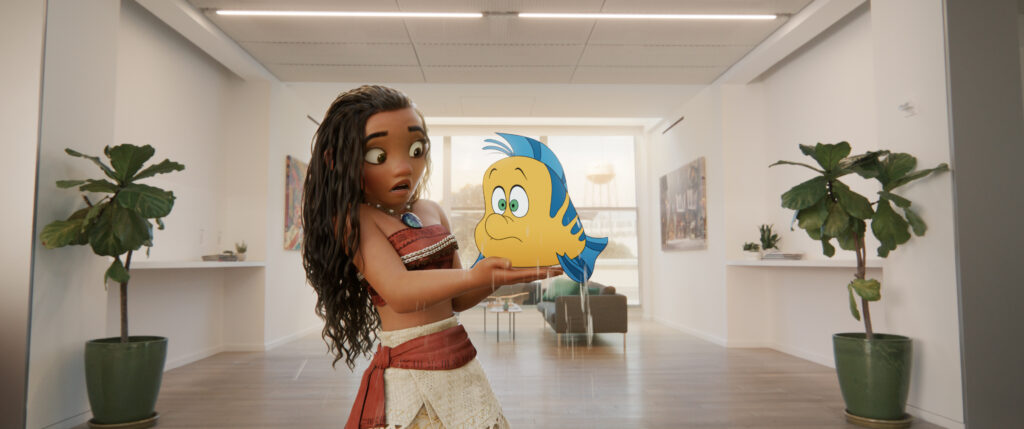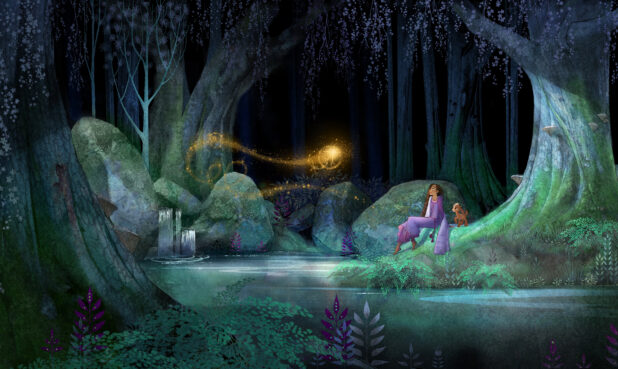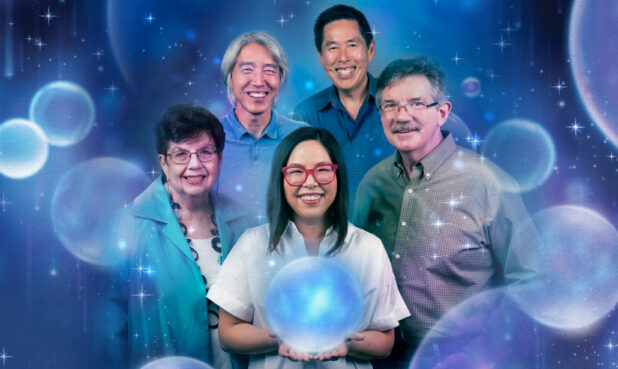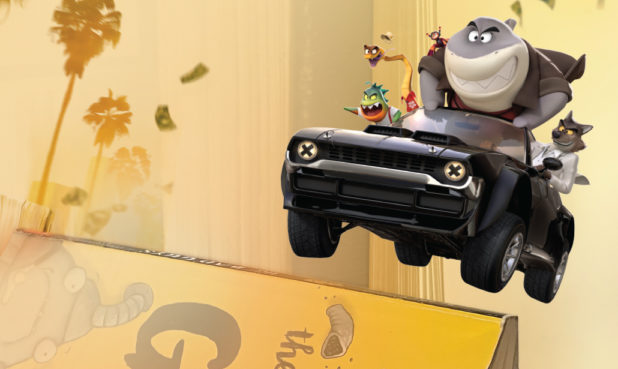Dan Abraham and Trent Correy spent eight months planning the eight-and-a-half-minute Once Upon a Studio. This wasn’t a typical job for the Disney Writer-Directors, though. They were working in secret.
“It didn’t come from marketing or corporate or the boss,” says Correy. Instead, it came from the two self-proclaimed Disney fans wanting to celebrate what Disney characters mean to them.
In early conversations they realized their fascination with what goes on behind the scenes and set the short inside the real-life studio. Next, Abraham says: “Trent had the great idea that the characters come to life from the artwork on our walls. I can just see it—they’re all popping out of their frames and how magical that’s going to be.”

Every year at Disney Animation, a big group photo is taken in front of the studio, and Abraham says, “We thought, what if Mickey’s gathering everyone for this photo for the 100-year anniversary.” But to do this concept, they needed to figure out how to unite 543 characters from 62 feature films and numerous shorts. “It was just the most fun puzzle,” Correy says.
“Trent had the great idea that the characters come to life from the artwork on our walls. I can just see it—they’re all popping out of their frames and how magical that’s going to be.”
—Dan Abraham
Once the duo let the mouse out of the bag and pitched their idea to studio head Jennifer Lee, the question was not whether the short would get made, but how.
It was decided they would not use old footage but rather have artists recreate characters with original artwork. While they knew it would be more efficient to tackle the 2D characters digitally, it was important to them that each one was hand-drawn.
They were excited by the thought of “bringing back heavy hitter animators to revisit their characters,” Abraham says. “We got Ruben Aquino to come back and draw [The Little Mermaid’s] Ursula. He hadn’t drawn Ursula in 30 years.” Along with those who came out of retirement, others were veteran hand-drawn animators still working in-house, including Randy Haycock, Mark Henn, and Eric Goldberg who was head of the hand-drawn team.
Abraham and Correy wanted every character to look and sound the way fans remember them, and they used the studio’s century of reference material to achieve this goal. An even bigger challenge? How to combine hand-drawn and CG animation. “We wanted to celebrate 2D flatness,” Abraham says, “but then it had to live next to Moana.”
While they had two pipelines going, one for hand-drawn and one for CG, “at the end of the day, it was just communication,” Correy says. “People working together in the building in Burbank under one roof.”

As well as being a reunion of favorite characters, Once Upon a Studio is also a tribute to a beloved Disney legend. The short opens with Burny Mattinson and a young Disney intern leaving the building for the night. Mattinson was able to see a rough cut of the short before he died this February at the age of 87. Active to the end, he started at Disney in 1953—just one year after The Animation Guild was founded.
“He is such a part of our history and our legacy,” Abraham says, noting that having Mattinson around was a reminder of what has continued to work about Disney films through the decades—sincerity. As well, Correy says they were inspired by Mattison’s philosophy: “Have fun making [movies], and it will shine through.”



